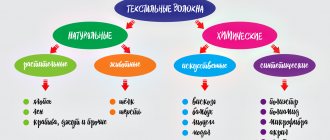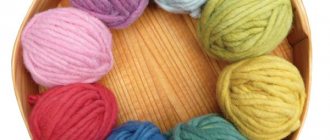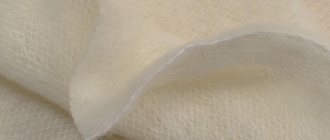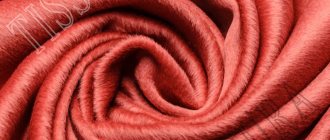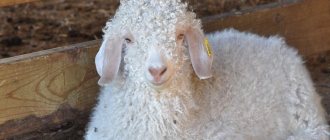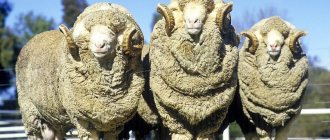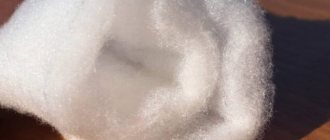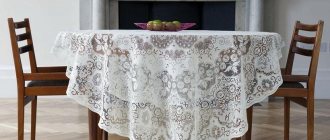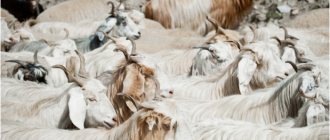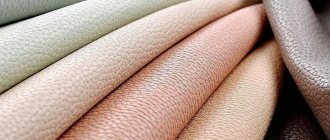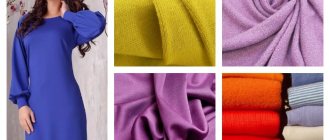We primarily associate winter with the New Year and snow, but if you think a little more, a fluffy sweater, warm mittens and a knitted scarf will come to mind. They are all mostly made of wool, but why is it that a sweater is softer than a scarf, and mittens are warmer and tougher? How is wool obtained? Is this material ethical and should those concerned about animal cruelty wear it? How to Green conducted an investigation of this topic and is in a hurry to share the information found.
There are about 500 species of sheep in the world with wool fibers of different properties: long and short, coarse and soft, straight and curly. Due to their ancient history and the fact that sheep are easy to breed, their wool is one of the most common in the production of clothing and household items. Other sources of wool are also quite popular. Camel down is valued for its hypoallergenicity, lightness and durability, which are superior to sheep's. Thanks to the hollow pile filled with air, camel wool products retain heat better. The well-known cashmere - a thin, soft and warm fabric - is made from the down of mountain goats. Tibetan yak wool is hygroscopic, light and silky.
Wool classification
Sheep wool is usually classified according to two main characteristics: depending on the breed of sheep and by fleece. The first group is divided into four classes: from sheep with thin, soft and durable wool fiber (the most valuable of them are merino) to outbred sheep with coarse and not very strong fiber. In the second group, there are five main categories of fleece, that is, the wool itself: the fleece of a lamb (the softest), a young lamb from which the wool has not yet been cut (soft and durable due to the natural shape of the hair), the wool of mature rams (coarser hair), wool from meat and old sheep (low quality).
There are also two types of wool fabric: wool and worsted. The first is obtained from uneven curly fibers, due to which the fabric itself is loose, soft and thick. In the production of this type of fabric, a simple weave of a small number of threads is used. The second type of fabric is made from long and straight fibers and is spun into several threads with a twill pattern, which makes the fabric stronger, smoother and thinner.
Types of wool products, their use
According to the method of production, wool is divided into the following types:
- natural - sheared from animals (sheep, goat), combed (camel, dog, goat and rabbit fluff) or collected during the animal’s molt;
- factory - removed from the skin of an animal in production;
- restored - obtained by plucking flaps and scraps of yarn.
Natural is the most valued; it is from it that the best products are made; its qualities are much superior to reconstituted ones.
The composition of the material is of two types: woolen and half-woolen.
Important information! Pure wool fabric is considered to be a material that contains no more than 10% other fibers. It can be natural - cotton, linen or silk, or artificial - viscose, nylon.
According to the method of manufacturing fabric, matter is divided into the following types:
- worsted: made from semi-fine and semi-coarse twisted yarn, the best material for suits and dresses;
- fine cloth: consists of fine machine-made yarn, for coats;
- coarse cloth: consists of coarse yarn; overcoat cloth, felt, and felt boots are made.
Overcoat gray cloth
Woolen textiles are used for sewing various products - from coats and suits to bedding and thermal underwear. The range of fabrics is very wide:
- rep - thick suit material;
- gabardine - dense but light coat and raincoat fabric;
- bouclé fabric - thick suiting fabric with knots on the surface;
- jersey is a type of knitted material for dresses;
- velor - with pile, used in furniture upholstery, for sewing jackets and blazers, as well as for elegant holiday dresses;
- flannelette - with one-sided fleece, used for blankets;
- cloth - very dense and heavy fabric for outerwear;
- flannel - soft, thin, brushed, used for making diapers, baby undershirts and bed linen;
- tweed - soft material for demi-season coats;
- plaid - a soft thin material, the pattern is always checkered, used for sewing men's shirts and women's dresses;
- drape - heavy, dense material for a coat;
- cashmere is a dense material for coats, stoles, cardigans, pullovers, scarves, and is very expensive;
- felt - made by felting, used for sewing shoes and children's toys.
Important information! The seasoning used to dye fabrics is sumac. The result is green to brown colors that are resistant to water.
You might be interested in What is chesucha: description of wild silk and its use
Sumac seasoning for wool dyeing
Wool fabric production
The wool production process is divided into several stages. First, the sheep are treated with an antiseptic, after which the wool is sheared. It is usually carried out in spring or summer, one to three times a year. This process can be painful for the animals if the person cutting the hair does not take care of their skin, leaving wounds. Shearing is done either manually or using a controlled robot (to increase production rates). The removed wool is cleaned of sand, dirt, grease and sweat by placing it in baths with water, soap and soda.
After this, the painstaking work of sorting begins, which takes place in two stages: primary sorting involves separating good wool from bad ones, and secondary sorting involves sorting fibers by quality. Thus, the wool from the shoulder blades and sides of animals, soft and durable, is used to produce clothing items, and the wool from the lower parts of the legs is used for coarse home textiles.
Next comes combing, that is, straightening the fibers, for which they are driven through a series of metal teeth - a kind of comb. At the same stage, residual dirt is removed. After combing, the future worsted fabric is subjected to additional combing to remove short fibers and parallel placement of long ones. After obtaining clean, high-quality and combed fibers, they are twisted into threads - yarn, in order to then weave woolen fabric. At the last stage, the fabric is subjected to various treatments: dyeing, heat shrinking, immersion in water for stronger adhesion of the fibers.
A little history about the use of animal hair
Distant ancestors knew that wool perfectly protects from the cold. But initially, the entire technology for using animal hair involved skinning them. It was the skin taken from an animal killed during a hunt, along with its wool, that made up the clothing of ancient man.
You might be interested in what karkul and swakara are: from which animal fur are materials made?
As a result of the domestication of wild animals and the development of cattle breeding, new skills emerged - not only animal skins, but also animal hair were used to make warm clothes.
On a note! Mainly sheep, camel and goat. It was cut or combed, and yarn was spun from it - long threads consisting of intertwined hair. Such threads also retained heat, just like animal skins.
The technology for making yarn is simple - a spinning wheel and a spindle. It was with them that modern industry began. Archaeological excavations indicate the use of wool in the manufacture of clothing more than 1500 BC. e. A lot of evidence has been found in the territory of modern Italy, so it is safe to say that the ancient Roman citizens wore woolen tunics with pleasure.
Wool became the subject of profitable trade, and the economies of many countries depended on it. Great Britain has gradually become one of the leading countries in the production and export of woolen fabric.
Since the invention of the method of washing woolen products, they have been in deservedly high demand.
Its use as insulation for leather boots and suede boots is very popular.
Boots with wool inside
LiveInternetLiveInternet
Quote from SelenArt
Read in full In your quotation book or community!
BALL OF LIFE FORCE.
KNITTING
Why are we so comfortable and cozy in woolen things? Wool yarn is similar in structure to human hair, so it is very comfortable when in contact with the skin. Wool is a collective term that includes the hair of sheep, camel, goat, llama, rabbit and even dog. The wool of different animals varies in properties and uses. GENERAL PROPERTIES OF WOOL Ability to retain heat Ability to absorb water Elasticity Resistance to creasing MINUSES Feltability of wool - formation of pellets. This disadvantage can be eliminated by adding an addition to the wool plant yarn or artificial fiber CAMEL HAIR
It is twice lighter than sheep wool and much stronger. The hair of this wool is hollow, which provides it with additional heat-insulating properties and lightness. It protects not only in cold weather, but also in hot weather from overheating. Clothing for astronauts and sailors is made from camel wool. It is electrified, has the ability to repel dust, and even protects against electromagnetic fields. BENEFITS Traditional medicine recommends this wool for the prevention and treatment of many diseases, including the nervous and genitourinary systems (nephritis, urolithiasis, prostate cancer, inflammation of the appendages) IMPORTANT. This wool is completely hypoallergenic
RABBIT HAIR
It is not suitable for spinning - it is too short. They use only Angora fluff. Rabbit fluff is lighter and softer than goat fluff, but products made from it are less durable. Therefore, children's clothes, hats and cheap blouses are knitted from this wool (before the first wash) BENEFITS Wool is effective against diseases musculoskeletal system GOAT
It is rarely used in its pure form, as it has a coarse structure. Therefore, goat fluff is used, soft and durable. It contains 20 amino acids. BENEFITS Down is very effective for sore throat and varicose veins. DOG HAIR
Contains surfactants, the penetration of which through the skin produces a beneficial effect on the body. Neutralizes electrical charges, retains heat, and promotes abundant blood flow to the sore spot. BENEFITS Headaches are soothed by a hat made of dog hair. For otitis media, it is useful to wear a bandage made of dog hair on your ears. It is good to wear products made from this wool when working in cold conditions, during active sports, fishing, hunting. IMPORTANT The wool of each breed helps with different ailments. Chow-chow-throat Lapdog-gynecology Sheepdog-joints, ligaments, back SHEEP WOOL Lapdog
It has special energy and has a healing effect on the human body and soul. In ancient times, sheep skins were used to nurse premature babies. BENEFITS Sheep wool contains lanolin (animal wax) which accelerates the healing of wounds, fractures, and damaged tissue.
SELENART
Series of messages “Handmade-hand made”:
Part 1 — Booklets of cross stitch Lilies Part 2 — Pumpkins made of polymer clay… Part 98 — red jacket Part 99 — SIMPLE BARBLE WITH OBLIQUE WEAVE Part 100 — Cards for volumetric decoupage
Proper care
Wool fabrics are machine washable, subject to the following conditions:
- temperature no more than 30°C;
- delicate “manual” mode;
- zippers must be closed;
- special detergent marked “for wool”;
- do not wring, dry on a flat surface;
- You can iron it through a damp cloth or by setting the appropriate mode on the iron.
When wearing sleeves for a long time, the cuffs are subject to frequent friction. They may become shiny. To get rid of shine, you need to steam the product and rub it with a stiff brush.
Caring for wool products
Important information! Wool products absorb odors well. The aroma of your favorite perfume will linger on your woolen coat. But lovers of cigarette smoke should wear woolen items less often. The tobacco smell does not disappear for a very long time. Only dry cleaning will help you deal with it.
Light industry is improving and keeping up with the times. New technologies are being launched into production, new synthetic materials are appearing. But wool, as a truly natural material, will never go out of fashion.
